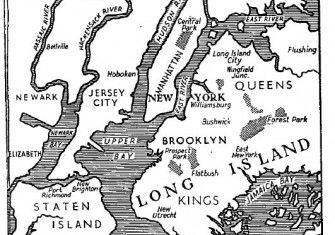
On the Streets of New York City
The pushcarts of the Lower East Side epitomised New York’s bustling immigrant community. The drive to Americanise brought about their demise and changed the streets forever.
The stereotypical landscape of the Lower East Side is of crowded tenements and too many people on the street. A quintessential part of that landscape is the pushcart. While open markets and street vending date back to New York’s colonial roots, in 1886 four pushcart vendors set up shop on Hester Street and, in the 75 years that the practice continued, 25,000 pushcart vendors would spring up in New York City.
By the late 19th century, millions of immigrants from eastern and southern Europe were pouring into New York’s Lower East Side, making it the most densely populated place on earth. The pushcart performed an essential economic and social function and provided a vital entry point onto the rungs of American society for this community. Yet, by the mid-20th century this vibrant scene had almost entirely disappeared. New York’s war with these vendors was not so much about quality of life as it was about a struggle for dominance between the old world and the new: the American and the immigrant.







